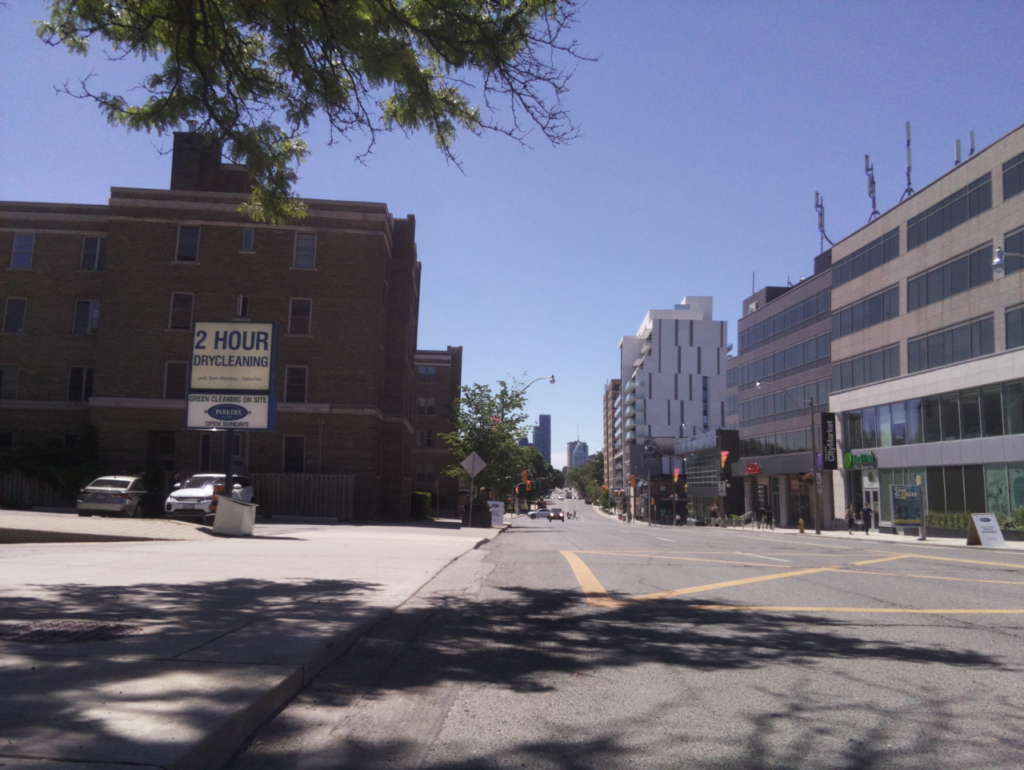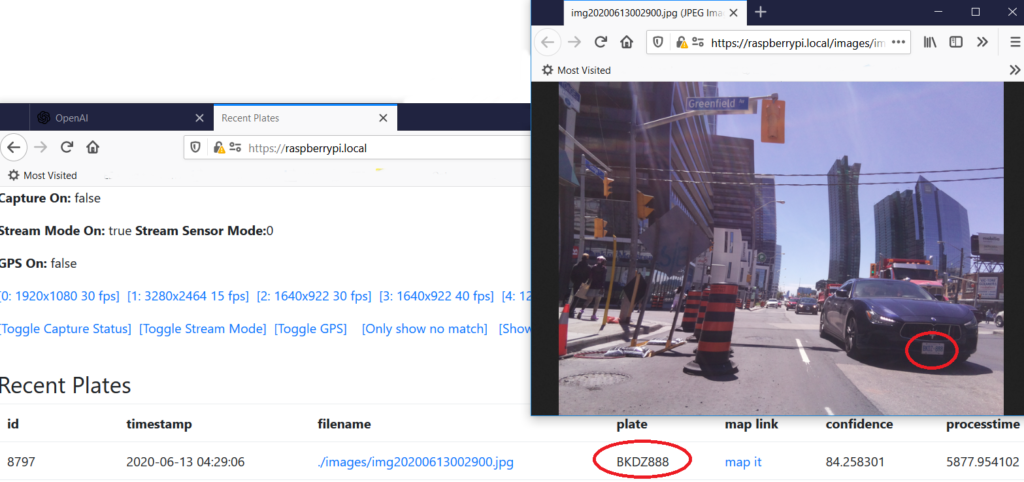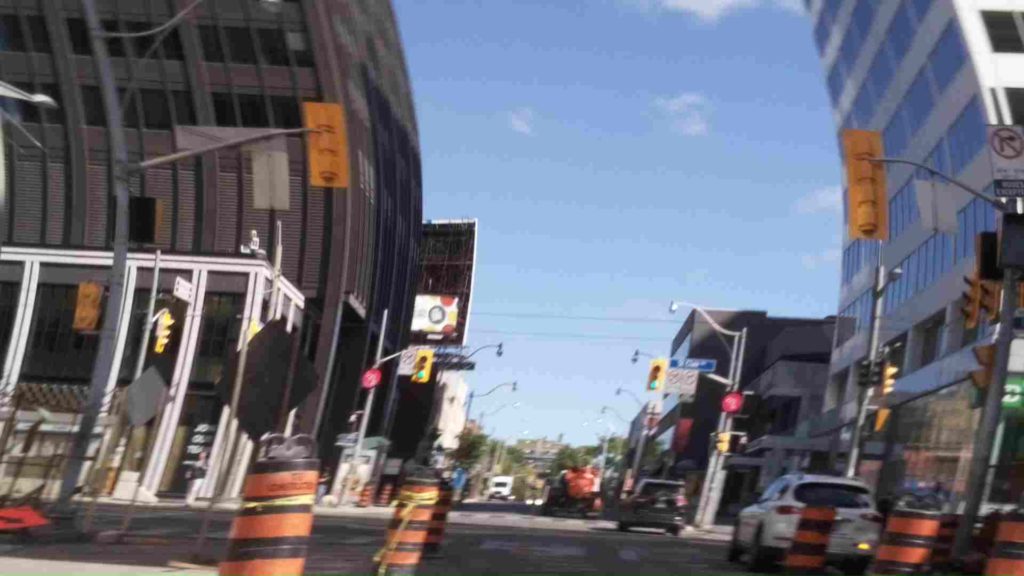Bicycle Dashcam Part 3: More field testing
On a sunny mid-June Saturday, I took my bike for a ride down Yonge St to lake Ontario with my bicycle dashcam, testing my latest changes (May 18th). Over the course of a 2 hour ride, taking a photo about every 10 seconds:
- Reviewing the photos with my own eyes, I can make out about 45 images with readable plates (not every image was usable or had a car in the photo)
- Of these 45, OpenALPR can make out about 10

OpenALPR picked out this dry cleaning sign as license plate 2 H0UR
I’m going to try running these photos through alternate ALPR engines, and compare results.
On this run, I tested the Pi Camera V2’s various sensor modes: the streaming modes at 1920x1080 30 fps, 3280x2464 15 fps, 640x922 30 fps, 1640x922 40 fps, 1280x720 41 fps, 1280x720 60 fps, as well as the still mode at 3280x2464. Further testing is likely still required, but I continue to get the best results from the still mode - all of the successful matches were shot using still mode.

I’m getting better results than I had on previous runs as a result of tweaking the pi-camera-connect NodeJS library to:
- use a 5 second capture delay, which allows exposure time, gain, and white balance to be determined
- set the exposure mode to sports, which reduces motion blur by preferentially increasing gain rather than exposure time
However, the images are still not as good as I would like.
Rolling shutter issues are apparent in some photos taken by the Pi Camera V2 while in motion
The Plate Recognizer service has an excellent article on Camera Setup for ALPR. It highlights many of the challenges I’m seeing with my setup:
- Angle, lighting
- 8 MP is suggested for highway or street monitoring - the Pi Camera is sufficient in this regard
- Zoom - I think this is a challenge in my setup - I liked the idea of getting everything around me, but I think I have to reduce the area I capture to get a view of the plate with more detail. Perhaps focus to my “7 o’clock” rather than capture everything behind me.
- At 30 mph (~45 km/hr), which probably covers most bike riding in traffic, they suggest at least 3 to 5 frames at 15-25 frames per second.
I might order the latest Pi camera with the zoom lens and see if I get better results.
Reviewing the data from my ride, there’s also an issue with my code that pulls the GPS coordinates from the phone, which I didn’t see when testing at home. I figure this is either the phone locking while I ride, and not running the javascript - I’ll try using the NoSleep.js library before my next test run.
